In 1938 Christopher Tunnard — an English landscape architect, a garden designer and the author of
Gardens in the Modern Landscape, who was a strong advocate of functionalism in design — wrote, “The modern house requires modern surroundings, and in most respects the garden of today does not fulfill this need.”
At the time the first International-style houses were being built in the United Kingdom. They were beautiful geometric white boxes with perfect, clean lines, yet the gardens that were being made around them were Jekyll-esque — rustic, blousy herbaceous borders.
Are our gardens any different today? Many still hold to traditional values in garden design, whether they suit the houses they surround or not. Some modern trends in gardening, such as the “new English” style, look to the past rather than current architectural ideas. With a lot of modern house design mirroring the International style, surely the surrounding gardens should complement them: functional yet following the same geometric, clean lines, with little or no decoration.
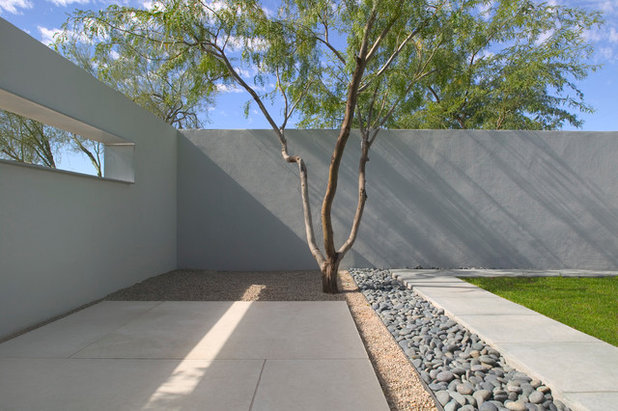
Ibarra Rosano Design Architects
Simple and functional gardens that fit in with the architecture of a home can sometimes be difficult for us to relate to, as they tend to not reference previous styles of garden design much and are divorced from any historical references.
Yet surely it is this style of garden design that fits with how we lead our lives, and has some of its roots in the works of Adolf Loos, an Austrian architect from the early part of the last century, and the renowned Bauhaus school of design in the 1930s.
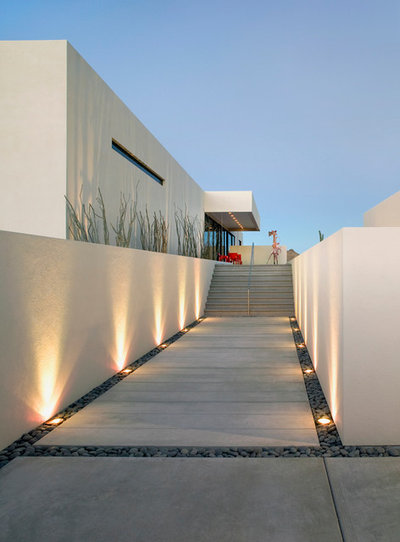
180 degrees
Recently I read a quotation from the writing of Loos: “To find beauty in form instead of making it depend on ornament is the goal to which humanity is aspiring.” Loos lived in a era when decoration and ornamentation were king in design, so it’s interesting to see how he was one of the first people to look at it in a different way, to see a world where you didn’t need ornamentation to create good, functional design.
But if we create landscapes to match functional architecture, will they just be sterile environments we cannot relate to, without the historical references we are used to?
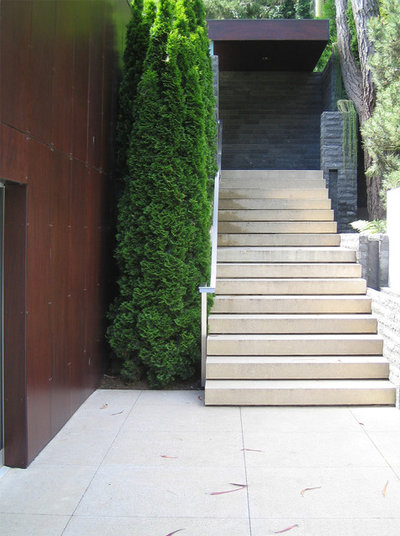
Jensen Architects
When we remove the use of ornamentation and only take architecture for our garden design reference point, how do we avoid creating sterility or blandness in the resulting design? There are many design tools that can be used to put interest into the simplest of functional garden designs.
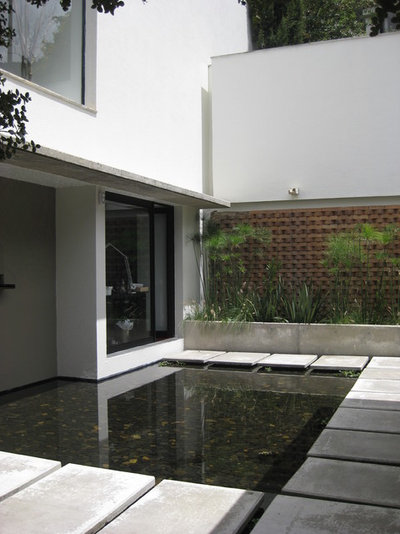
Adriana Aristizabal
Link the house with the garden. Using the same construction materials is perhaps the obvious way to relate garden to house, creating a seamless link between the two.
The balance of different areas can also be vital. Here the still area of water not only creates interest in its reflections, but it also balances out the large window adjacent to it. The fact that both structures reflect light pulls the design together, while the reflection of the building in the pool blends the building with the garden.
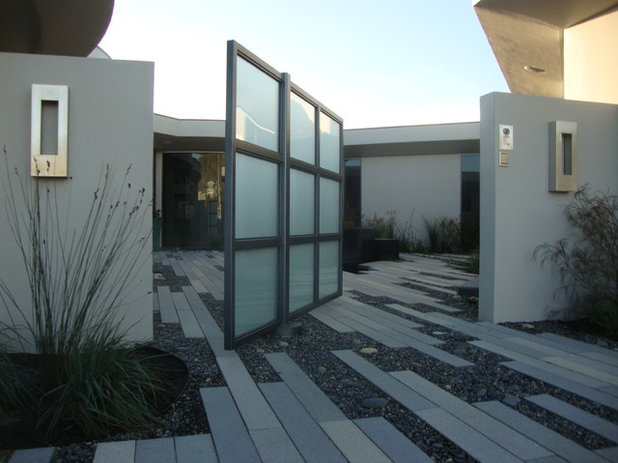
Jeffrey Gordon Smith Landscape Architecture
It doesn’t always have to be the same materials in both garden and house; sometimes using different materials that are the same color and tone can work. We can see a perfect example here of how using long, rectangular pavers made of an aggregate that’s the same gray tone as the walls and gate works so well in bringing both together.
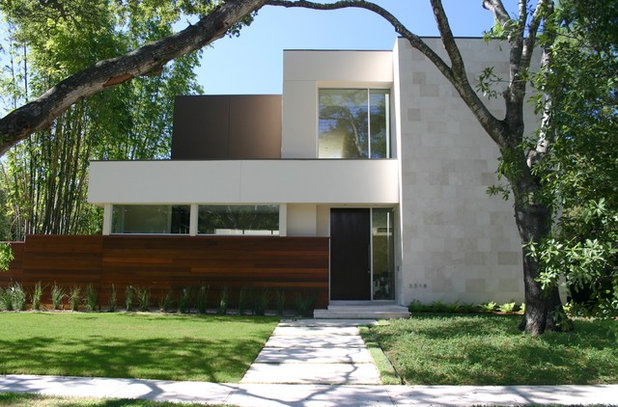
Allen Bianchi
Use plantings as a building block. In linking a house to its surroundings, soft landscaping tends to be used as a building block in the main design rather than as a purely decorative feature. Blocks of grass and other plantings, though soft materials, still relate to the geometric planes of the house.
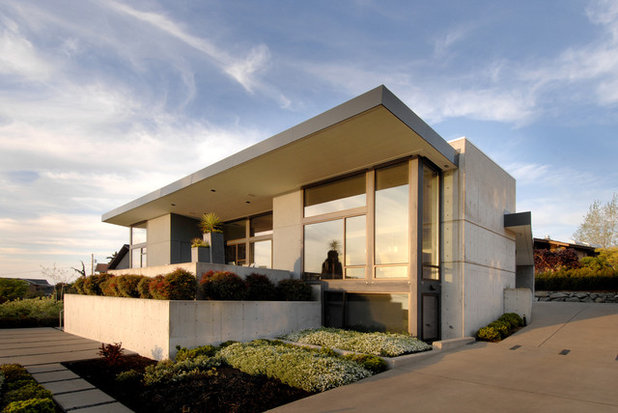
Lane Williams Architects
For some gardeners the idea of plantings being just a building block within the garden’s design is quite debatable. They see plantings as a decorative element that can be separated from the overall garden design. But when you’re creating a landscape to match a house, any element of ornamentation could detract from the functional design.
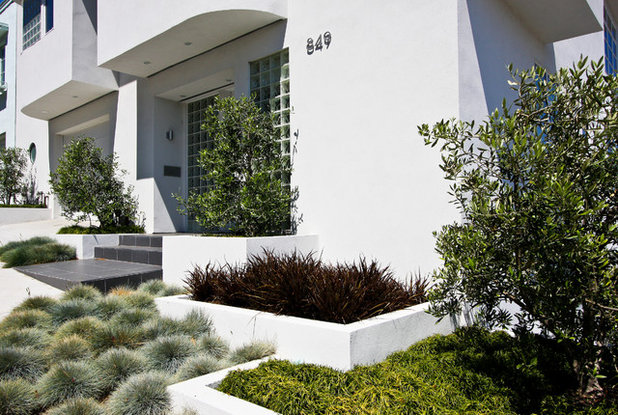
Bella Vita Garden Design
Landscape architects Thomas Church and Roberto Burle Marx both believed in the unity of house and garden, combined with simplicity of design. Burle Marx showed us how to use plantings as one of the building blocks in the complete design of house and garden, and his garden designs are perhaps the finest companion to modernist architecture.
In this front garden, the low-maintenance planting quite clearly has been used to create blocks of texture and color that mirror the geometric building design of the house and even the rectangles of glass bricks.
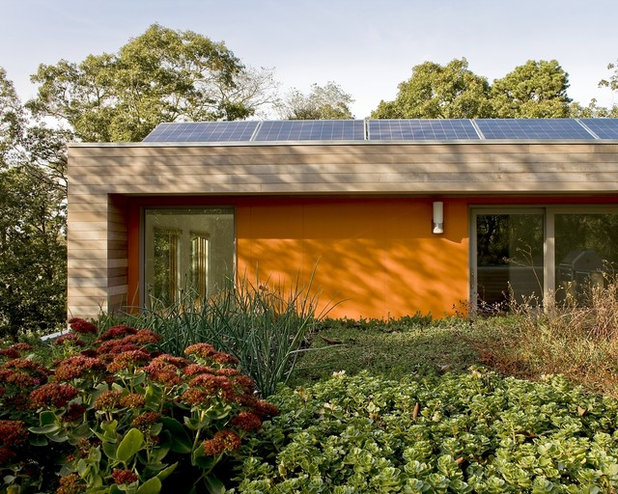
ZeroEnergy Design
Complement with wilder plantings. Not all landscapes for modern houses have to be composed of large amounts of hardscape. The advent of prairie-style plantings and perennial meadows has given us the opportunity to create reasonably low-maintenance planting schemes that complement modern architecture. Here we see a green roof that has a wonderful mixture of plants yet blends seamlessly with the building that it is part of.
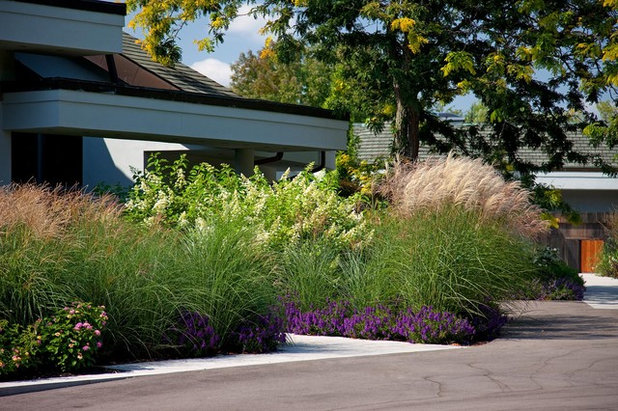
Peter A. Sellar - Architectural Photographer
Using plantings as building blocks doesn’t mean you are restricted to evergreen ground covers or clump-forming grasses. Here we see a planting that is both exuberant and colorful as part of a very contemporary scheme for a modern house.
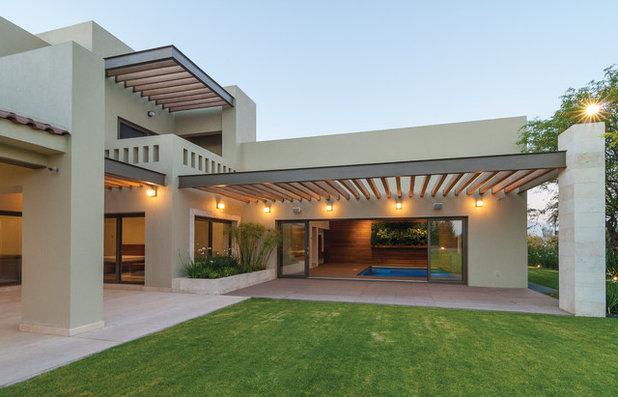
VEGA VEGA ARQUITECTOS
Many gardeners will think a garden’s being designed just to link the house to its surroundings is a step too far, just a homage to the architect, but to others who delight in the purity of form, it is the future of garden design.
Tell us: Which side of the fence are you on?
More: Borrow From the Bauhaus for a Modernist Landscape Design
Browse more garden styles





